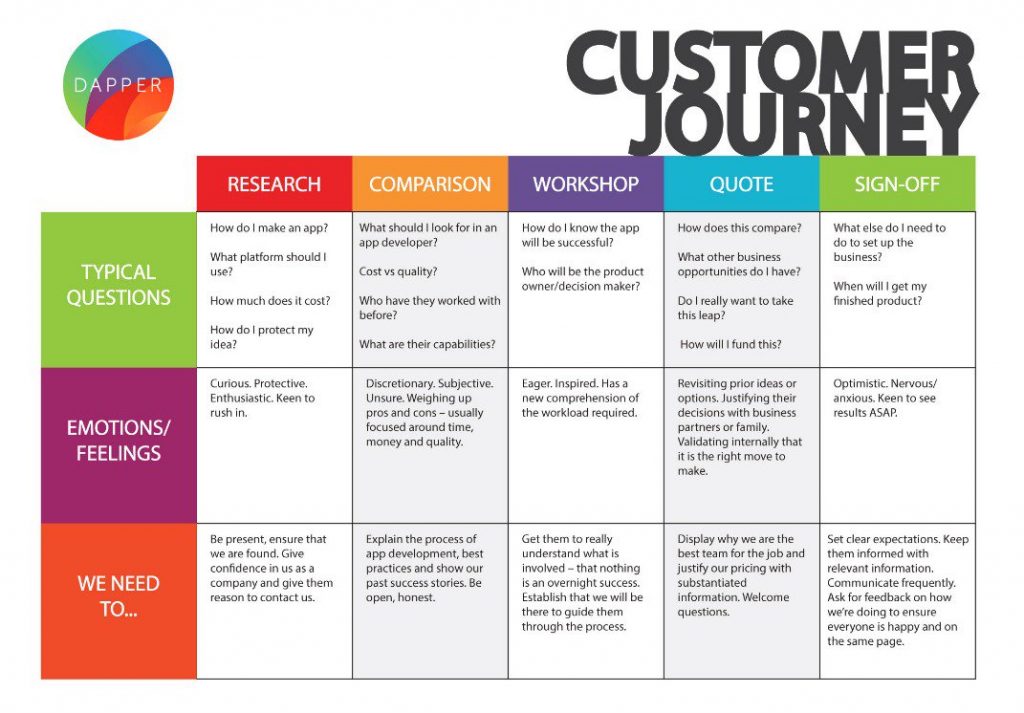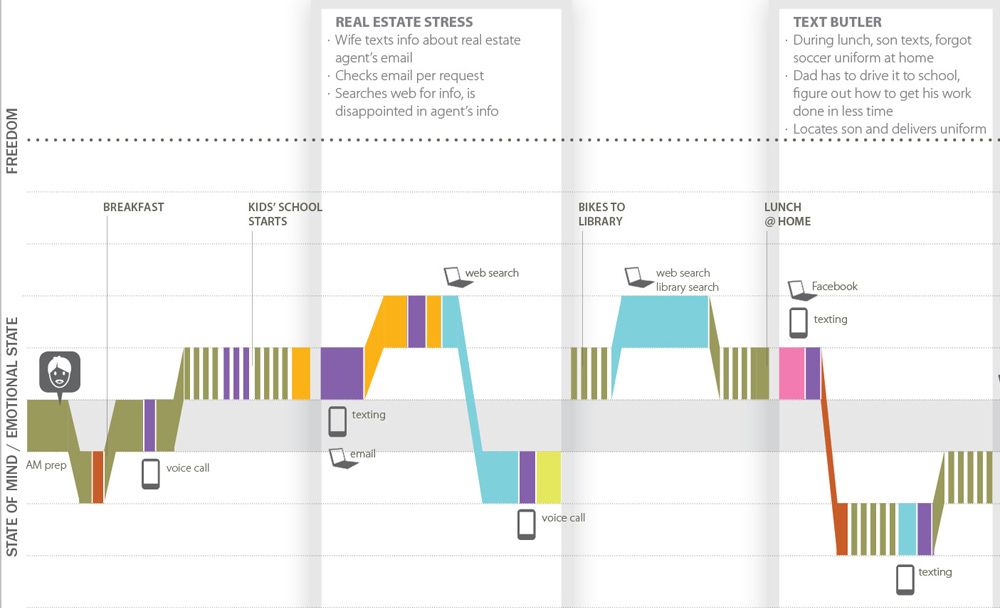These days, satisfying your customers is no longer enough to keep them.
Research shows that 75 out of every 100 customers who churn reported being “satisfied or completely satisfied.”
The onus is always on the business to keep customers actively engaged; never make it easy for them to churn. The customer experience must be seamless.
That’s why you need a customer journey map — it’s the single most important factor in understanding the ins and outs of the buyer’s process.
What is a customer journey map?
The customer journey map visually represents the steps a buyer goes through and their touch points with a brand. It plots key moments in the customer’s process; things they do, tools they use, even places they go.
With the help of a customer journey map, you can figure out your customers’ motivations — their concerns, needs, and pain points.
When you understand your customer’s motivations, you can design and structure your touch points and offerings to serve them better. It’s all about creating the most efficient and effective process for your buyers.
The map tracks the current process to see if customers are reaching the goals. If they’re not, the visual representation makes it easy to see gaps or issues in the flow, allowing you to rectify them.
There are multiple different types of customer journey map, including:
- Current state
- Day in the life
- Future state
- Path to purchase
How to create your customer journey map
A B2B map is going to look pretty different to a B2C retail map, but the common thread is that each should show the customer’s journey phase by phase.
Each step must be aligned with a goal to maximize customer success. Everything you do should be in an effort to solve customer problems and facilitate their long-term success with your product or service.
Buyers often weave up and down, in and out, of the sales funnel. It’s rarely a straightforward path from A to B. So take the time to determine what the elements are before you attempt to plot it visually.
Business leaders represent the journey in a variety of ways, from post-it notes on a whiteboard, to infographics. As long as the map makes sense to you and your team, that’s all that matters.
Process for creating the map
- Set clear objectives
- Market research, determine customer needs, and define their goals
- List the touchpoints and interactions (e.g. social channels, paid ads, email marketing, review sites)
- List the emotions customers are feeling and actions they’re taking at those points
- Identify what sort of map to create (e.g. day in the life)
- Walk in the customer’s shoes (take the customer’s journey yourself)
- Make adjustments accordingly
Example customer journey maps


Making the most of your customer journey map
Your customer journey map is extremely useful when it comes to digital planning and execution.
The map highlights buyers’ needs, concerns, and pain points. This allows you to meet those needs and offer solutions through your organization’s digital platform(s).
Note how Karten Design’s customer journey map plots digital usage throughout the day. These are the key moments their customers are online; Karten Design is able to respond by developing digital touch points to encourage customers to engage.
For example, there’s opportunity for email marketing to be designed around the time of day that customers are checking emails. SEO content and a Google Ads campaign can be planned for the times when customers are conducting online research. Facebook ads could be set up to display when customers are eating lunch at home.
You get the idea.
Then, to seamlessly merge the customer’s journey with their path to purchase, some further guidance is required.
After all, it’s no good getting customers to your website or app, only for them to “bounce” within the first minute because they weren’t able to achieve their goal.
This is where digital adoption comes into play.
If there’s any friction caused by the need to use digital tools along the customer’s path to purchase, there’s unlikely to be any sales. By making digital platforms as easy to use and engaging as possible, enterprises are less likely to lose customers from the funnel.
Applying a digital adoption tool to an organization’s digital platforms streamlines and ensures rapid and successful adoption. This in turn improves customer engagement, retention, and sales.
Because users are guided by the Digital Adoption Platform (DAP), they’ll always be able to achieve their goal. The DAP uses AI and machine learning to understand user behavior and personalize guidance accordingly.
The DAP supercharges your customer journey map and makes it 10x more effective.













